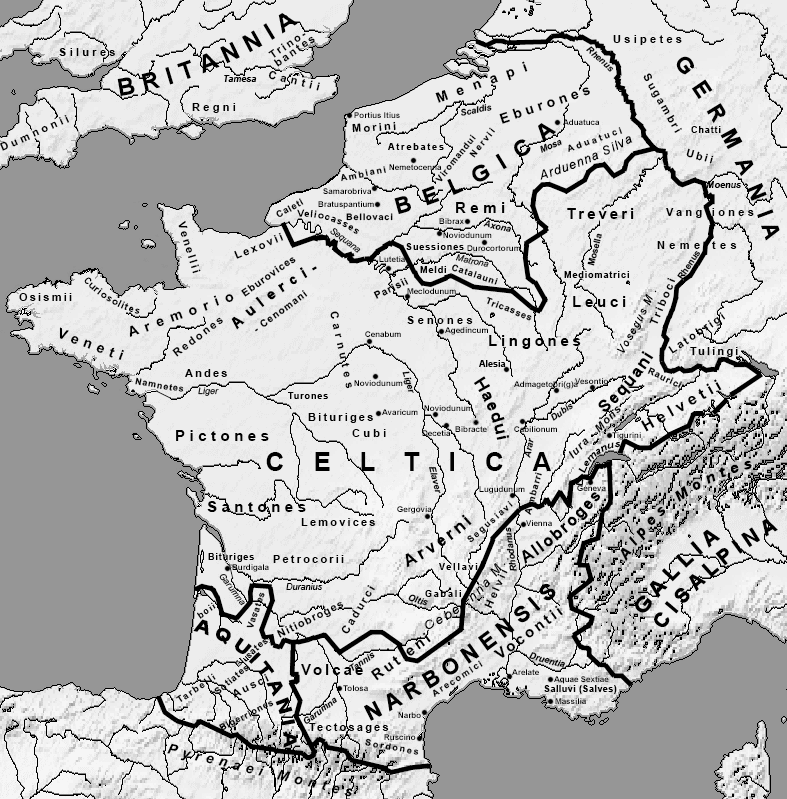À la recherche des origines de la langue française (Level B1 - B2)

La langue française appartient à un groupe de langues appelées les langues indo-européennes, qui dateraient du Néolithique, soit d’environ 10 000 ans. On y retrouve des langues aussi variées que le français, le russe, le persan ou encore le hindi. Si l’on observe le mot mère en différentes langues – madre en espagnol, mother en anglais, mat’ en russe, matar en persan ou encore mata en hindi – on remarque une racine commune, preuve de cette origine partagée malgré la diversité actuelle.
Au fil du temps, ces langues se sont divisées selon des aires géographiques, notamment du nord au sud :
- les langues latines (ou romanes) : le français, le portugais, l’espagnol, l’italien, le roumain ;
- les langues slaves : le russe, le polonais, le tchèque…
- les langues germaniques : l’allemand, l’anglais, le néerlandais…
- les langues scandinaves : le suédois, le norvégien…
- les langues helléniques : principalement le grec.
Une exception remarquable en Europe : le basque, une langue non indo-européenne, déjà présente avant l’arrivée de ces langues, et encore parlée aujourd’hui par environ 700 000 personnes. Son origine reste mystérieuse, et on ignore comment elle a réussi à survivre à travers les millénaires.
Revenons au français
Environ 80 % du vocabulaire français est issu du latin. À l’époque romaine, il y a 2000 ans, la population adopte progressivement des mots d’origine latine. Mais attention : il ne s’agissait pas nécessairement du latin classique parlé par les élites, mais plutôt d’un latin populaire, véhiculé par les soldats, les commerçants ou les colons, plus accessible et plus proche de la langue du peuple.
Par exemple, en latin classique, cheval se dit equus. Mais dans le langage courant des soldats romains, on disait caballus, qui était un terme argotique. C’est ce mot caballus qui a donné cheval, cavale, cavalier, tandis que equus a donné des mots plus savants comme équestre, équitation, etc.
Avec la chute de l’Empire romain, le latin perd peu à peu son statut de langue dominante. Les invasions germaniques, notamment dans le nord de la Gaule, apportent une nouvelle influence linguistique, visible encore aujourd’hui dans certains mots.
Naissance du français
Aux alentours de l’an 1000, trois grandes zones linguistiques apparaissent :
- la langue d’oïl au nord,
- la langue d’oc au sud,
- et le franco-provençal dans la région alpine.
Les mots oïl et oc signifient tous deux oui, mais dans des variantes régionales différentes.
Progressivement, la langue d’oïl prend le dessus sur les autres.
Ce n’est qu’en 1539, avec la signature de l’Ordonnance de Villers-Cotterêts par le roi François Ier, que le français (appelé à l’époque françois) est déclaré langue officielle. La langue d’oïl devient alors la langue administrative unique sur tout le territoire.
Et les langues régionales ?
Pendant longtemps, les langues maternelles des Français étaient les langues régionales : occitan, breton, alsacien, basque, corse, picard, etc.
Autrement dit, la plupart des Français étaient bilingues : une langue locale à la maison, le français dans l’administration ou à l’école.
C’est notamment avec la Première Guerre mondiale, quand les soldats de différentes régions ont dû se comprendre, que le français s’est imposé comme langue de communication nationale, et que les langues régionales sont peu à peu tombées en désuétude.
Depuis une vingtaine d’années, ces langues régionales connaissent un renouveau, sont mieux valorisées, enseignées dans certaines écoles, et protégées comme patrimoine culturel.
TRADUCTION :
In Search of the Origins of the French Language
The French language belongs to a group of languages known as the Indo-European languages, which date back to the Neolithic period, around 10,000 years ago. This group includes a wide variety of languages such as French, Russian, Persian, and Hindi.
If we look at the word mother in different languages — madre in Spanish, mother in English, mat’ in Russian, matar in Persian, or mata in Hindi — we can clearly see a common root, showing that these diverse languages share a common origin.
Over time, these languages split according to geographic regions, especially along a north–south axis:
- Romance languages: French, Portuguese, Spanish, Italian, Romanian;
- Slavic languages: Russian, Polish, Czech...
- Germanic languages: German, English, Dutch...
- Scandinavian languages: Swedish, Norwegian...
- Hellenic languages: mainly Greek.
A remarkable exception in Europe is Basque, a non-Indo-European language that was already present before the arrival of Indo-European tongues. It is still spoken today by around 700,000 people. Its origin remains a mystery, and it is still unclear how it has managed to survive through the millennia.
Let’s focus on French
About 80% of French vocabulary comes from Latin. During the Roman era, around 2,000 years ago, people gradually adopted Latin-based words. But beware — this wasn’t necessarily the classical Latin used by the elites. It was often a popular or vulgar Latin, spread by soldiers, merchants, and settlers, and was more accessible and closer to the spoken language of the people.
For example, in classical Latin, the word for horse was equus. However, Roman soldiers commonly used caballus, a slang term. It’s caballus that gave us cheval, cavale, and cavalier in French, while equus led to more scholarly words like équestre and équitation.
With the fall of the Roman Empire, Latin gradually lost its status as the dominant language. The Germanic invasions, especially in the north of Gaul, brought with them a new linguistic influence — one that is still visible in certain French words today.
The Birth of the French Language
Around the year 1000, three main linguistic zones emerged:
- The langue d’oïl in the north,
- The langue d’oc in the south,
- And Franco-Provençal in the Alpine region.
Oïl and oc were two regional ways of saying yes.
Little by little, the langue d’oïl began to dominate the others.
It wasn’t until 1539, with the signing of the Ordinance of Villers-Cotterêts by King Francis I, that French (then called françois) was declared the official language. The langue d’oïl became the sole administrative language throughout the kingdom.
And what about regional languages?
For a long time, the mother tongues of most French people were regional languages: Occitan, Breton, Alsatian, Basque, Corsican, Picard, and others.
In other words, most French people were bilingual — speaking a local language at home and French in administration or at school.
It was especially during World War I, when soldiers from different regions had to understand each other, that French became the dominant national language, and regional languages gradually fell out of use.
Over the past twenty years or so, these regional languages have experienced a revival — they are now more valued, taught in some schools, and protected as cultural heritage.




